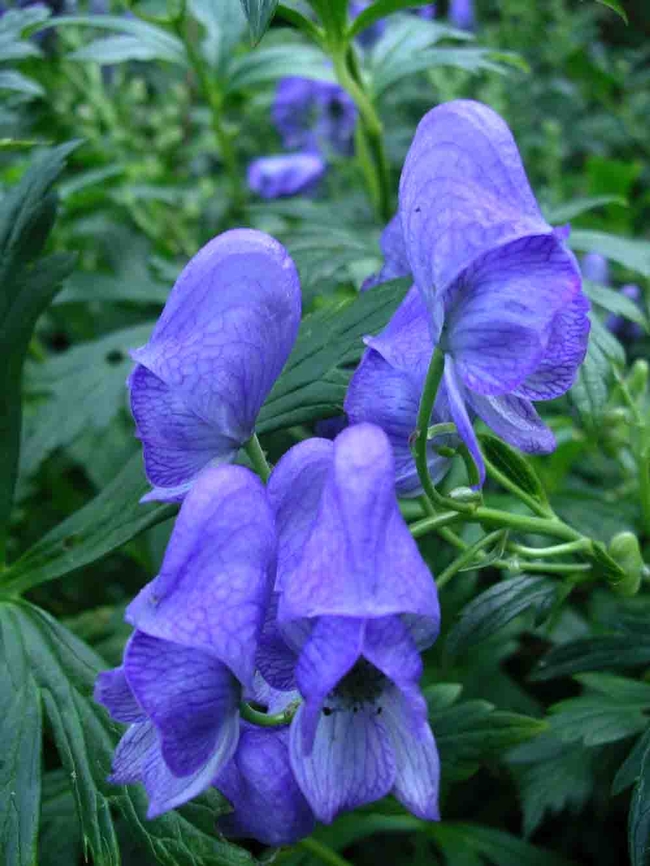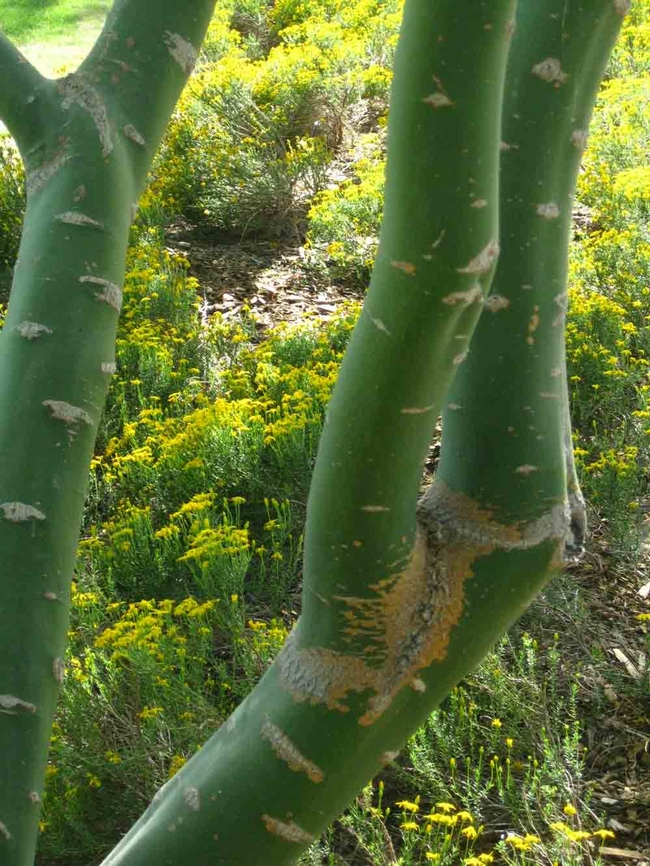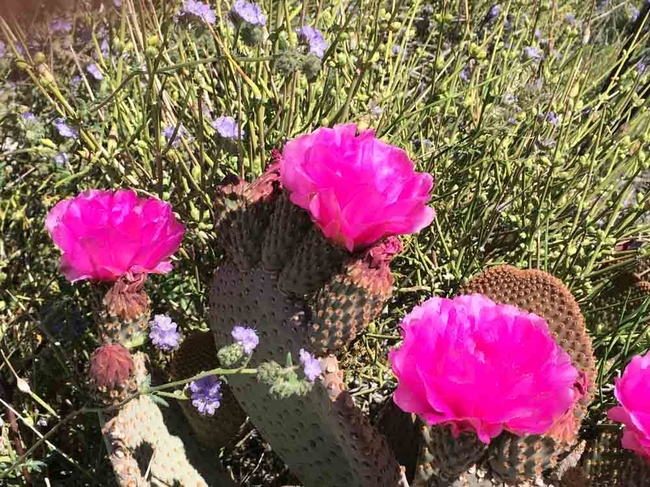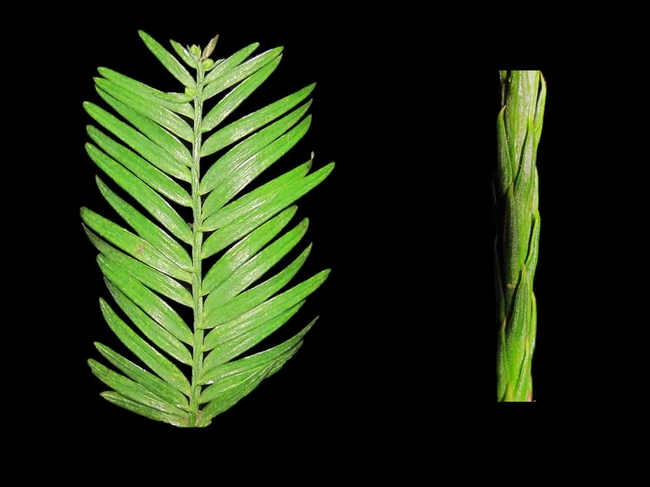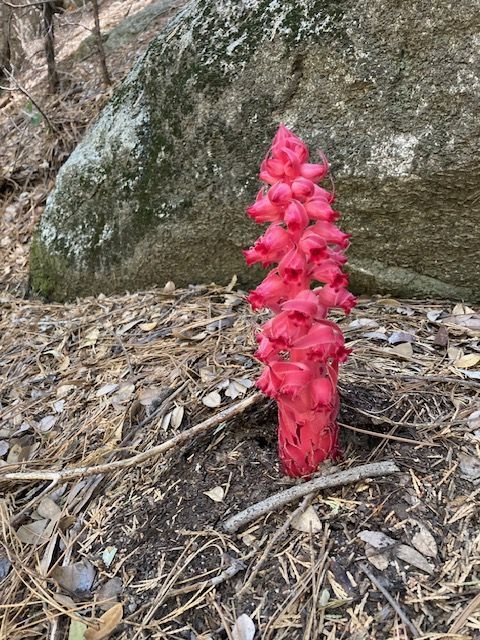Next time you go for a walk in Upper Park, look closely at the different plants you see. Notice the enormous diversity of shapes, colors, and forms. There are trees, shrubs, perennials and annuals, all different shapes and sizes of leaves, and tremendous variation in flower color and structure from one species of plant to another. This diversity is the result of evolution over the ages. Plants have adapted to the specific conditions of their native habitat. These conditions include climate, availability of water, soil type, and interactions with other organisms. Adaptations can be structural or physiological.
Himalayan monkshood has a hood roomy enough to accommodate a large bumblebee. Cindy Weiner
Photosynthesis occurs in both the leaves and bark of the blue palo verde. Elize Van Zandt
The beavertail cactus (Opuntia basilaris) is a kind of prickly pear cactus. It lacks long spines but its flat, fleshy pads are covered with small bristles that have barbed tips. The bristles help shade the pads and also protect the cactus from being eaten. The pads themselves are modified stems. They have a waxy cuticle to reduce water loss and store water within. During periods of drought the pads shrivel and then plump back up when rain returns.
The beavertail cactus has fleshy pads that can store water. Elize Van Zandt
All plants have very small holes called stomata on the underside of their leaves. The hole can open for exchange of carbon dioxide and oxygen gases or close to maintain the proper balance of water. Most plants open their stomata during the day to take in carbon dioxide for photosynthesis. They close the stomata at night to retain water. Plants in the cactus family, plus some succulents and certain orchids, open their stomata at night and close them during the day. They have a modified photosynthetic cycle, called Crassulacean Acid Metabolism (CAM), which helps to reduce water loss during gas exchange. Carbon dioxide enters the open stomata at night when less water will be lost to the outside air. The carbon dioxide is then fixed and combined with another chemical to form an organic acid. The acid is then stored until the daytime when sunlight is available to finish the process of transforming it to sugar. CAM is an example of a physiological adaptation.
The forests of the Coastal Redwood (Sequoia sempervirens) are lush, green, and typically receive a generous amount of rainfall during the winter but little rain during the summer. How do the redwoods survive the dry season? While the North Coast doesn't get much rain in the summer, it does have regular fog. Scientists have long suspected that redwood leaves, especially those near the top of the tree, are able to absorb water from fog without adversely affecting photosynthesis. When stomata are covered by even a thin film of water, the water can block the flow of carbon dioxide into the leaf, limiting photosynthesis.
The two types of redwood leaf shoots. Peripheral on the left and axial on the right. Alana Chin, UC Davis
The flowering stalk of the snow plant. Eliza Van Zandt
Think about plant adaptations when choosing plants for your garden. Generally speaking, the better a match between a plant's adaptations and the conditions in your garden, the better the plant will perform. If you choose a plant native to an area that is much different from your garden, you will probably need to make some changes in your garden so it can provide for more of the plant's needs.
Want to learn more about this topic? Attend our workshop on Adaptations of California Native Plants (Wednesday, May 22), part of the Master Gardeners' 2024 Spring Workshop Series. For information about all the workshops, and to register, visit our website. All workshops are free, but registration is required.
PLANT SALE! Mark your calendar for our plant sale on Saturday, May 18, 2024 from 9 am–noon. The sale will be held at the Master Gardeners Demonstration Garden at Patrick Ranch. The plants, which are selected to thrive in our climate, have been propagated by UC Master Gardeners of Butte County. For more information and a partial list of the plants that will available, visit our website.
UC Master Gardeners of Butte County are part of the University of California Cooperative Extension (UCCE) system. To learn more about us and our upcoming events, and for help with gardening in our area visit our website. If you have a gardening question or problem, email the Hotline at mgbutte@ucanr.edu or leave a phone message on our Hotline at 530-552-5812. To speak to a Master Gardener about a gardening issue, or to drop by the MG office during Hotline hours, see the most current information on our Ask Us section of our website.
